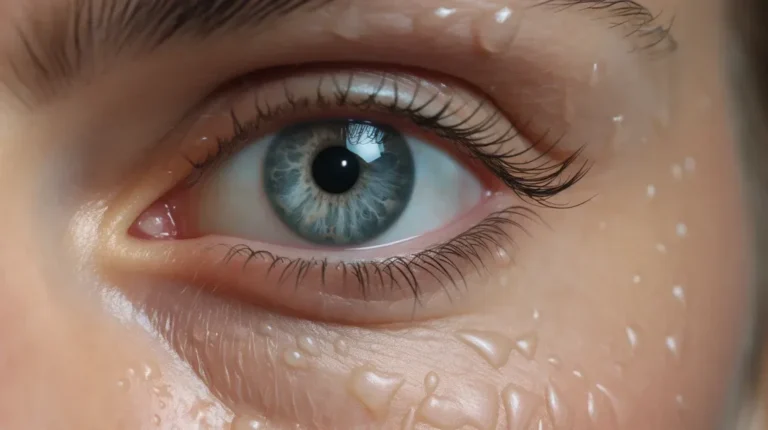What Is Botulism and How Is It Related to Botox?
Curious about botulism and its connection to Botox? You might be thinking, ‘Why would I want to know about a condition that can cause muscle paralysis and even death?’
Well, here’s the thing – Botox, derived from the same neurotoxin as botulism, has become a game-changer in medical and cosmetic treatments.
In this article, we’ll explore the relationship between Botulism and Botox, diving into the science, applications, and ethical considerations.
So, buckle up and get ready to discover the fascinating world of these intertwined subjects.
Key Takeaways
- Botulism is a harmful condition caused by the Clostridium botulinum bacteria, while Botox is a beneficial treatment that utilizes botulinum toxin.
- Ongoing research and technological advancements are shaping the understanding and use of botulinum toxin, with an increasing use of Botox in various medical and cosmetic treatments.
- Best practices involve stringent food safety measures to prevent botulism, ethical considerations in the cosmetic use of Botox, and advancements in medical applications of neurotoxins.
- The article should provide an analysis of the pathophysiology of botulism, the transformation of botulinum toxin from a poison to a therapeutic agent, the safety protocols and effectiveness of Botox, recent cases of botulism and their implications for public health, and the ethical considerations in the cosmetic use of Botox.
Understanding Botulism: Causes and Symptoms
Botulism, a critical health condition caused by the bacterium Clostridium botulinum, poses significant risks due to its potent neurotoxin, botulinum toxin. Recognized as one of the most lethal toxins, this substance can lead to severe muscle paralysis and neurological complications.
This dangerous illness can manifest through various pathways. Foodborne botulism results from ingesting food tainted with the toxin, particularly in improperly canned or preserved foods. Infants are especially vulnerable to botulism through honey consumption. Additionally, inhalational botulism, though rarer, can occur through airborne exposure, and wound botulism is linked to contaminated substances, particularly in drug use scenarios.
Symptoms of botulism are alarming and demand immediate medical attention. These include generalized weakness, blurred or double vision, difficulty swallowing, and progressing muscle paralysis. The rapid onset and progression of these symptoms underline the urgency of seeking prompt medical intervention.
Treatment strategies primarily involve the administration of an antitoxin to neutralize the botulinum toxin, coupled with supportive care to manage and alleviate symptoms. Proactive measures, like meticulous food handling, proper canning techniques, and avoiding potential sources of contamination, are critical in preventing botulism. Public awareness and education about these preventive practices play a pivotal role in reducing the incidence of this severe condition.
Understanding botulism in depth not only underscores the dangers posed by the Clostridium botulinum bacteria but also highlights the importance of early detection, effective treatment, and rigorous preventive measures to safeguard against this life-threatening condition.
The Science Behind Botulinum Toxin

The science behind the botulinum toxin involves understanding its mechanism of action and its role in medical and cosmetic applications.
Botulinum toxin is produced by the bacterium Clostridium botulinum and is known for its ability to cause muscle paralysis. It works by blocking the release of acetylcholine, a neurotransmitter that allows muscles to contract.
This mechanism of action makes botulinum toxin an effective treatment for various neurological disorders characterized by excessive muscle activity, such as dystonia and spasticity.
In addition, botulinum toxin has gained popularity in cosmetic medicine for its ability to temporarily reduce the appearance of wrinkles by relaxing facial muscles.
Understanding the mechanism of botulinum toxin is crucial for its safe and effective use in both medical and aesthetic treatments.
Medical Applications of Botox
One everyday use for botulinum toxin, commonly known as Botox, is in the field of medicine.
Botox has several medical uses, primarily in the treatment of various neurological and muscular conditions. It’s often used to treat muscle spasms, such as those associated with cervical dystonia or spasticity. Botox is also used to alleviate chronic migraines and excessive sweating. In addition, it has shown effectiveness in managing certain eye conditions, such as strabismus and blepharospasm.
Botox is administered through injections directly into the affected muscles, where it acts by blocking the release of acetylcholine, a neurotransmitter responsible for muscle contractions. This muscle relaxation effect provides relief to patients with these medical conditions.
It’s important to note that Botox should only be administered by trained medical professionals in a controlled setting.
Botulism Prevention Strategies
Preventing botulism, a potentially fatal illness caused by Clostridium botulinum bacteria, necessitates rigorous adherence to food safety protocols and public health guidelines. Minimizing the risk of bacterial contamination involves meticulous attention to food storage, handling, and preparation techniques.
Critical Aspects of Food Safety for Botulism Prevention
Foodborne botulism, often resulting from ingesting contaminated food, highlights the importance of stringent food safety measures. High-risk foods, particularly home-canned goods like low-acid vegetables and meats, are common culprits. To safeguard against botulism, it’s critical to employ correct home-canning methods. This includes using pressure canners to achieve temperatures sufficient to eliminate the bacteria and its spores.
Furthermore, proper storage conditions for canned foods are vital. Storing cans in cool, dry places and promptly discarding any that appear bulging or leaking are essential steps in mitigating botulism risks. These practices are crucial not just for home-canning enthusiasts but also for the broader community to ensure food safety and prevent botulism.
Public Health Measures to Curb Botulism
Complementing food safety efforts, public health measures play a pivotal role in botulism prevention:
- Proper Home-Canning Techniques: Ensure all home-canned foods are processed correctly to prevent Clostridium botulinum growth.
- Vigilant Food Storage Practices: Prompt refrigeration of perishable items and disposal of spoiled or contaminated foods are vital in preventing botulism.
- Infant Feeding Guidelines: Refrain from giving honey to infants under one year old due to the risk of infant botulism from Clostridium botulinum spores.
- Awareness of Botulism Outbreaks: Stay informed about any botulism cases in your area and heed advice from health authorities.
By integrating these food safety guidelines and public health strategies, individuals and communities can significantly lower the risk of botulism. These measures not only prevent the spread of this dangerous bacteria but also contribute to overall public health safety and awareness.
Botulism Treatment Methods
When it comes to treating botulism, one effective method is the administration of botulinum antitoxin. This treatment helps neutralize the botulinum toxin in the body and prevent further muscle paralysis.
In addition to antitoxin, other botulism treatment methods include supportive care and respiratory support. Supportive care involves managing symptoms and providing fluids and nutrition to the patient.
Respiratory support is crucial in severe cases where the respiratory muscles are affected. It may involve the use of a ventilator to assist with breathing.
It’s important to note that while botulinum antitoxin and supportive care are effective in treating botulism, they don’t reverse the effects of the toxin on the muscles. This is where Botox comes into play, as it can help with muscle paralysis caused by botulism. However, it’s essential to consider the safety and potential side effects of Botox before opting for this treatment option.
Exploring the Relationship Between Botulism and Botox
One crucial aspect to understand about the relationship between botulism and Botox is the role that botulinum toxin plays in both conditions.
Botulism is a rare but severe illness caused by the Clostridium botulinum bacteria, which produces the neurotoxin. When ingested, this toxin can cause muscle paralysis and potentially life-threatening complications.
On the other hand, Botox is a purified form of botulinum toxin that’s used in medical and cosmetic treatments. It works by blocking the nerve signals to the muscles, causing temporary muscle relaxation.
In medical applications, Botox is used to treat various neurological disorders, while in cosmetic treatments, it’s used to reduce the appearance of wrinkles and fine lines.
Despite their different purposes, both botulism and Botox involve the interaction between botulinum toxin and the nervous system.
The Use of Botox in Aesthetic Medicine
Botox is widely utilized in aesthetic medicine to reduce the appearance of wrinkles and fine lines. This injectable neurotoxin has become a popular choice for cosmetic treatments due to its ability to temporarily paralyze facial muscles, resulting in a smoother and more youthful appearance.
Here are some key points about the use of Botox in aesthetic medicine:
- Botox injections are commonly used to target specific areas of the face, such as the forehead, crow’s feet, and frown lines.
- The procedure is minimally invasive and typically requires no downtime, making it a convenient option for those seeking quick results.
- Botox works by blocking the release of acetylcholine, a chemical messenger that signals muscle contractions, temporarily relaxing the muscles and reducing the appearance of wrinkles.
- Botulism diagnosis techniques, such as clinical assessment and electromyography, aren’t applicable in the context of Botox in aesthetic medicine.
Understanding the use of Botox in aesthetic medicine is essential before delving into its safety and potential side effects.
Safety and Side Effects of Botox
When considering Botox treatments, whether for cosmetic or medical purposes, understanding the safety profile and potential side effects is essential. Botox, derived from botulinum toxin, has a well-established safety record when used correctly, but like all medical treatments, it carries potential risks and side effects.
Common Botox Side Effects:
- Muscle Weakness: Temporary paralysis of the target muscle is the desired effect of Botox, but occasionally, it can cause unintended muscle weakness nearby.
- Bruising and Swelling: Minor bruising or swelling at the injection site is common and typically resolves quickly.
- Headache: Some recipients may experience a mild headache following the treatment.
- Flu-like Symptoms: A rare side effect is the development of flu-like symptoms, including fatigue, fever, and body aches.
It’s important to note that these side effects are generally mild and transient. However, if you experience severe or prolonged side effects, it is crucial to contact your healthcare provider.
Long-Term Safety of Botox:
Long-term use of Botox has been studied extensively. While generally considered safe for ongoing use, the long-term effects can vary based on individual factors and the frequency of treatments.
- Frequency of Treatments: Overuse or frequent treatments might increase the risk of developing resistance to the product or experiencing diminished effects.
- Area of Use: Different areas of the body may react differently to long-term Botox use. For instance, repeated use for facial wrinkles is commonly well-tolerated.
Managing Potential Risks:
To optimize safety and minimize risks, it’s essential to follow these guidelines:
- Choose a Qualified Practitioner: Ensure that the person administering Botox is a qualified healthcare professional with specific training in Botox injections.
- Discuss Your Medical History: Before treatment, disclose your complete medical history, including any allergies or neurological conditions, to your practitioner.
- Follow Post-Treatment Care Instructions: Adhere to any care instructions provided by your healthcare provider to reduce the risk of side effects.
- Report Adverse Reactions: If you experience any unexpected or severe reactions after Botox, contact your healthcare provider immediately.
Botulism Outbreak Cases and Public Health Implications
Botulism outbreaks have significant public health implications, affecting numerous individuals and necessitating immediate response and intervention. These outbreaks occur when individuals are exposed to the bacterium Clostridium botulinum, which produces a neurotoxin that causes muscle paralysis. The consequences of botulism can be severe, leading to respiratory failure and even death if left untreated.
Public health agencies play a crucial role in identifying and investigating botulism outbreak cases to prevent further spread of the disease. This involves surveillance, laboratory testing, and contact tracing to identify the source of contamination and prevent additional cases.
Additionally, public health officials work to educate the public on safe food handling practices, as most cases of botulism are caused by improperly processed or stored foods. By promptly responding to botulism outbreaks, public health agencies can minimize the impact on affected individuals and prevent the spread of the disease.
Ethical Considerations in Cosmetic Use of Botox
Are you aware of the ethical considerations surrounding the cosmetic use of Botox?
When it comes to using Botox for cosmetic purposes, several ethical factors should be taken into account. Here are some key considerations to keep in mind:
- Informed Consent: It’s crucial for patients to fully understand the potential risks and benefits of Botox treatments before giving their consent.
- Industry Standards: Practitioners should adhere to ethical guidelines and industry standards to ensure patient safety when administering Botox injections.
- Unrealistic Expectations: It’s important to manage patient expectations and provide realistic outcomes to avoid potential dissatisfaction or harm.
- Misuse and Overuse: Overuse or unnecessary use of Botox can lead to adverse physical and psychological consequences. Practitioners must prioritize patient well-being over financial gain.
Considering these ethical considerations is essential to ensure the responsible and ethical use of Botox for cosmetic purposes.
Recent Advancements in Botulism Research
Recent advancements in botulism research have shed light on the mechanisms of toxin production and potential therapeutic applications.
Studies have focused on understanding the presence of botulinum toxin in food and its impact on public health. Researchers have made significant progress in unraveling the complex mechanisms by which Clostridium botulinum bacteria produce the neurotoxin. This knowledge has paved the way for the development of more effective prevention strategies and improved diagnostic techniques for botulism.
Furthermore, recent advancements have also explored the potential therapeutic uses of botulinum toxin beyond its cosmetic applications. These include its potential to treat various neurological disorders and muscle-related conditions.
The ongoing research in botulism is guiding future directions for both botulism and Botox as scientists continue to explore new therapeutic possibilities and refine safety protocols.
Future Directions for Botulism and Botox
The future of botulism research and Botox treatments holds promising advancements in medical applications, along with significant ethical considerations in their use, particularly in cosmetic treatments. Here’s a detailed overview:
Research on Neurotoxin Advancements:
- Targeted Treatments for Neurological Disorders: Ongoing research focuses on developing botulinum toxin treatments that are more precise and targeted for specific neurological conditions, enhancing therapeutic outcomes.
- Mechanism of Action: Advances in understanding the toxin’s mechanism at the molecular level could lead to more effective ways to utilize and modify the toxin for various medical applications.
- Safety and Effectiveness: Continuous efforts to improve the safety profile of botulinum toxin products and minimize side effects are primary research directions.
- Novel Neurotoxins: The development of new types of botulinum toxins, potentially with different durations of effect or specificities, could diversify treatment options for patients.
Botulinum Toxin in Medicine:
- Refined Injection Procedures: Research aims to perfect injection techniques to enhance the precision of Botox applications, reducing side effects and improving efficacy.
- Expanding Treatment Applications: Studies continue to explore the use of botulinum toxin in treating a variety of conditions, including chronic pain, spasticity, and certain psychiatric disorders.
- Personalized Medicine: Tailoring botulinum toxin treatments to individual patient needs and conditions is an emerging trend influenced by advances in personalized medicine.
Ethical Considerations in Botox:
- Informed Consent: Ensuring patients fully understand the risks, benefits, and alternatives to Botox treatments, particularly in cosmetic applications, is crucial.
- Patient Autonomy: Patients should be empowered to make decisions about their treatments without undue influence based on accurate and comprehensive information.
- Professional Integrity: Healthcare providers must maintain high ethical standards, recommending Botox treatments based on medical indications and patient well-being rather than for financial gain.
- Social Impact: The broader societal implications of cosmetic Botox use, including its influence on beauty standards and self-perception, warrant careful consideration.
Frequently Asked Questions
What Are the Potential Long-Term Effects of Botulism on the Nervous System?
The potential long-term effects of botulism on your nervous system can include muscle weakness, paralysis, and difficulty speaking or swallowing. It is essential to seek medical treatment to prevent further complications and promote recovery.
Are There Any Alternative Treatments for Botulism Besides the Use of Antitoxin?
There isn’t an alternative treatment for botulism besides antitoxin. Antitoxin is the primary and most effective way to counteract the effects of botulism and should be administered as soon as possible.
How Does the Cosmetic Use of Botox Differ From Its Medical Applications?
In cosmetic use, Botox is injected into specific muscles to reduce wrinkles and fine lines. In medical applications, Botox is used to treat various conditions like migraines, muscle spasms, and excessive sweating.
Can Botox Be Used to Treat Neurological Disorders Other Than Muscle Paralysis?
Botox can be used to treat certain neurological disorders, not just muscle paralysis. It has been studied for conditions like chronic migraines and cervical dystonia, offering potential relief and improved quality of life.
Conclusion
In conclusion, botulism is a severe condition caused by Clostridium botulinum bacteria. Botox, on the other hand, is derived from the same neurotoxin and has medical and cosmetic applications. Despite their shared origins, the therapeutic use of Botox has revolutionized the treatment of various conditions and enhanced aesthetic appeal.
One example of its effectiveness is a case study where Botox was used to alleviate chronic migraine symptoms. This treatment provided relief and improved the quality of life for patients.
Continued research and advancements in botulism and Botox hold promising prospects for the future of public health, neurology, and aesthetic medicine.







